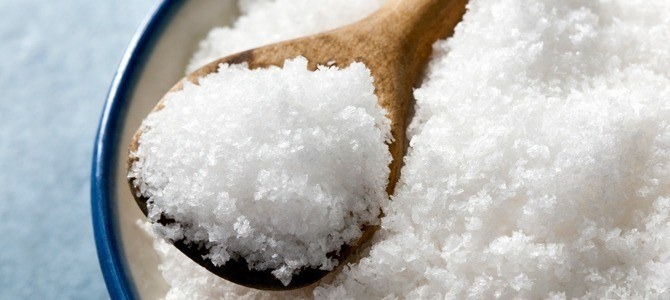Too Much Salt: Bad For Your Health?
The key to a healthy lifestyle, along with exercise and good sleep, is watching your diet. We're used to tracking calories, saturated fats, and sugars, but one thing we commonly overlook is our sodium intake. Sodium, otherwise known as salt, is the good stuff blanketed over every fast-food restaurant's french fries. Too little salt can harm you, and too much can send your blood pressure skyrocketing. The result of too much sodium over a lifetime is hypertension, or high blood pressure, which can lead to a number of difficulties, including strokes, kidney failure, and heart failure.
Watching our sodium intake is a necessary part of a healthy diet, but salt, like many great things in life, is addicting because we are so used to it. Reducing its appearance in our diets is difficult, and it requires a conscious effort. When the craving to load your meals up with salt strikes, try an alternative to enhance your weeknight dinners; pepper and other household spices will suffice, but you could also try salt alternatives, which contain potassium instead of sodium. Or, here's a wild idea — try food without any additives, and learn to enjoy the flavor of all-natural foods. We are creatures of habit, so eating healthy, just like exercise, will become easier the more we train our bodies to desire healthy foods. These alternatives do not work for everyone, though. For instance, individuals with kidney problems tend to retain potassium, resulting in high-serum potassium levels, which can lead to fatal heart arrhythmias. It's always a good idea to consult your doctor before changing your diet.
Click here to see 10 Vegetarian Dinner Recipes.
Where the Culprits Are Hiding
In theory, this all sounds good. Reducing salt intake equals a healthier lifestyle — simple enough, right? In real life, you're walking down the frozen food aisle at your local grocery store and picking out a "healthy microwave dinner" (or five), and you're feeling great about that colorful label boasting low cholesterol, low fat, and low calories. However, nearly all frozen dinners have 600-1200 milligrams of sodium, which almost takes care of your daily requirement in one sitting! Take a second, think consciously about your food choice, and put back that cardboard box. Check the label for sodium levels, and if you have the time and resources, whip up an alternative. The road to healthy eating begins in the grocery store, just like exercise begins by forcing yourself to go to the gym. If you have healthy foods at home, you will eat healthier, and once this becomes habit, you'll never know how you ate "that way" for so long.
The sultans of all salty dinners are fast-food restaurants. These grab-and-go food chains make a killing on high-sodium foods, like bread, eggs, and bacon. (So many great foods in one sentence, right?) Sandwiches average 800-1200 milligrams of sodium, which again fulfills your daily requirement before you even get to the fries. To put that meal in perspective, the "king" of burger joints has 690 milligrams of sodium in one order of large fries. These value meals might be easy on the wallet, but who cares about money if your blood pressure is at dangerous levels by the time you're 35? Is it really worth it?
 Your Kitchen Can Be Your Savior
Your Kitchen Can Be Your Savior
Understanding the problems caused by too much salt can help us find alternatives on our path to healthier eating. Spoiler alert: The best way to counteract high-sodium, processed foods is to not eat them. Cook your own food! When buying fast food or frozen dinners, we tend to ignore the nutritional labels and just go with what sounds healthy. Cooking your own food will force you to see every ingredient that goes into your meals, which can help enhance your new attitude toward eating. Sure, most recipes call for salt, but at least YOU can decide how much of it to use. Unseasoned vegetables, sweet potatoes, and fruit are great for getting the nutrients you need without the high-sodium levels and calories. If you want bread with your meal, try low-salt bread. If you want quick lunches, low-salt peanut butter and jelly sandwiches should suffice. To make it a little more interesting, toast that bread!
If we really want to see a universal change in our sodium intake, we must make a collective effort to impact the source directly. While many food vendors advertise low-cholesterol and low-fat options, they avoid low-salt foods. I suspect it's because it would be difficult to create a palatable flavor with that combination. Food vendors need their products to have a long shelf life while still tasting fresh, so adding large quantities of salt is their answer. However, salt is just as toxic as saturated fats — or more so. As our population ages and we begin to put nutritional labels under a larger microscope, the demand for low-sodium foods will rise. Companies who specialize in low-salt products promise to gain a significant market share once everyone understands the dangers of salt. Just as we had the low-cholesterol, low-saturated fat craze, I predict the coming of the low-salt craze. Become a part of the craze now, and forever reap the benefits of a healthy, low-sodium diet.

